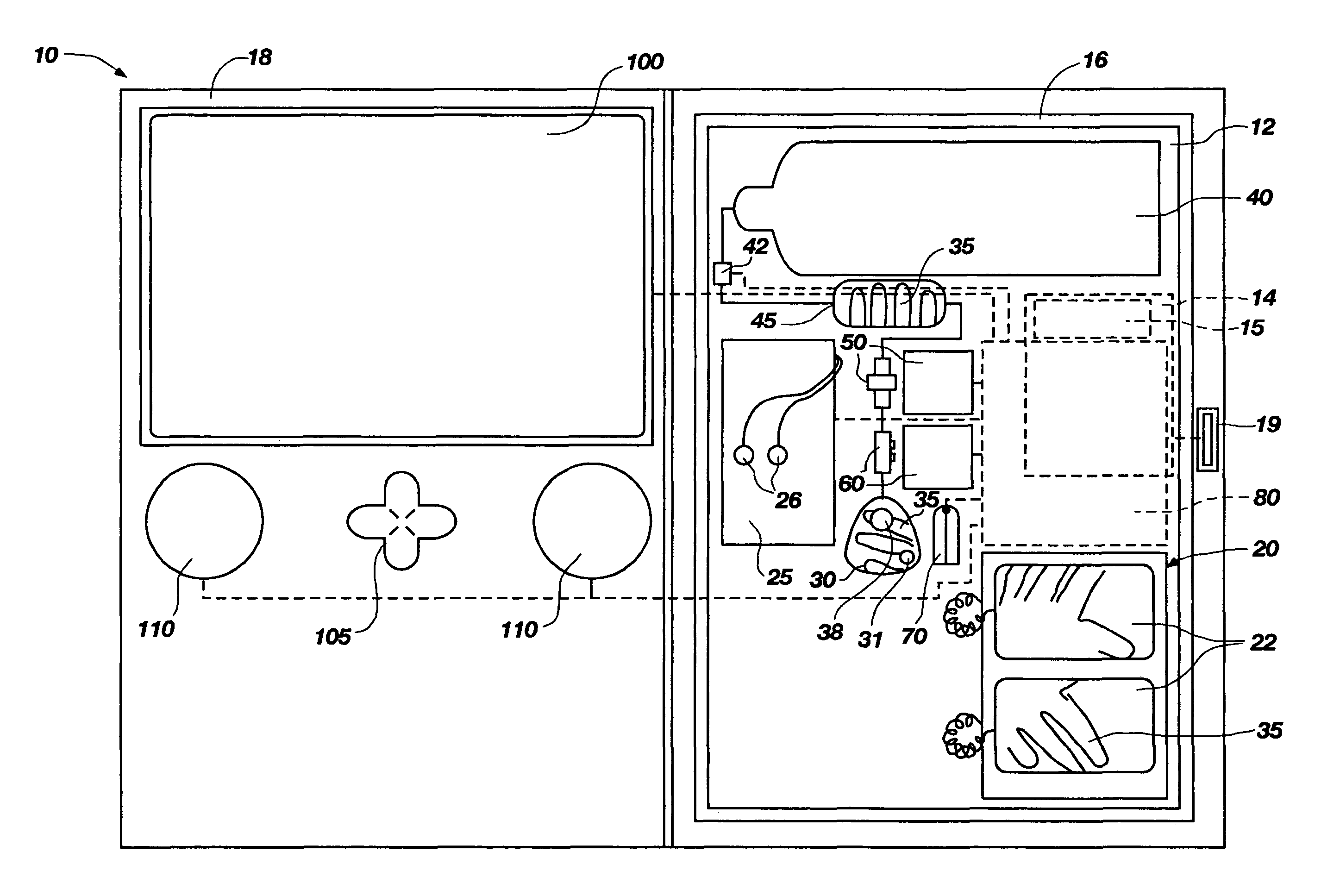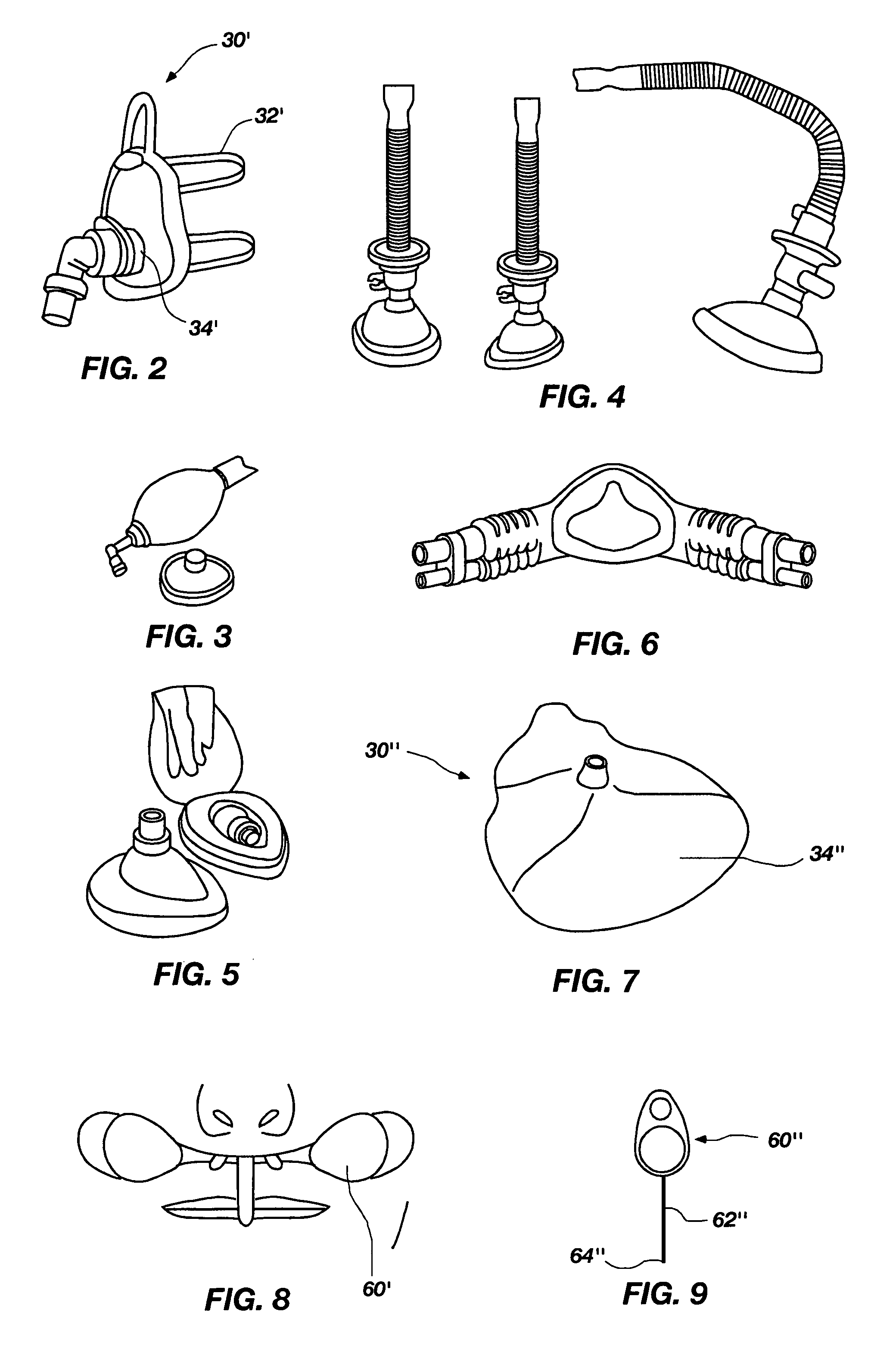System for providing emergency medical care with real-time instructions and associated methods
a real-time instruction and emergency medical care technology, applied in the field of apparatus and systems, can solve the problems of large number of cpr-trained individuals not being able to provide effective emergency care, failure of critical cpr administration skills, poor survival rate after out-of-hospital vf, etc., to minimize the amount of time it takes a responder and avoid confusion
- Summary
- Abstract
- Description
- Claims
- Application Information
AI Technical Summary
Benefits of technology
Problems solved by technology
Method used
Image
Examples
example
[0095]Use of a BLSS incorporating teachings of the present invention to provide an individual with instructions on treating a VF patient was compared with use of the instructions and components that are provided to members of the flight crew on the ISS.
[0096]Each group included twenty individuals, comprising first-year medical, nursing, and bioengineering students.
[0097]Each individual provided emergency medical care to a high-fidelity patient simulator (at the Center for Patient Simulation at the University of Utah) under some of the conditions present on the ISS. The scenario to which each of the individuals was subjected had a high likelihood of occurrence and severe mission impact. Their task was to follow the standard ACLS protocol in providing care for an unconscious crewmember. The task consisted of removing an obstruction from the airway with a finger sweep, placing a defibrillator, and attaching electrodes of an electrocardiogram so the patient in atrial fibrillation could ...
PUM
 Login to View More
Login to View More Abstract
Description
Claims
Application Information
 Login to View More
Login to View More - R&D
- Intellectual Property
- Life Sciences
- Materials
- Tech Scout
- Unparalleled Data Quality
- Higher Quality Content
- 60% Fewer Hallucinations
Browse by: Latest US Patents, China's latest patents, Technical Efficacy Thesaurus, Application Domain, Technology Topic, Popular Technical Reports.
© 2025 PatSnap. All rights reserved.Legal|Privacy policy|Modern Slavery Act Transparency Statement|Sitemap|About US| Contact US: help@patsnap.com



